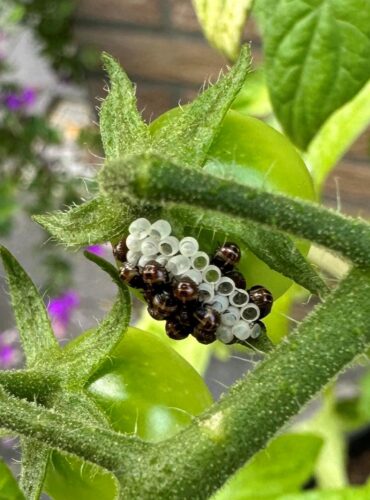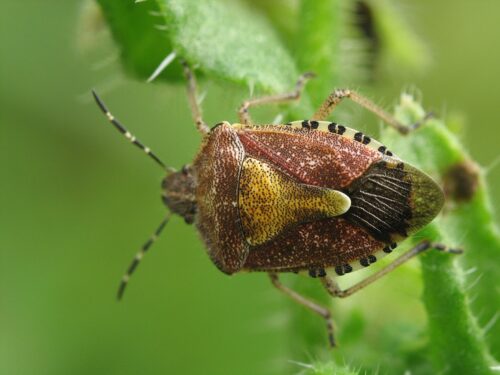Hairy shieldbug, this purple-brown and greenish shield bug is 10 to 14 mm in size and belongs to the family of shield bugs.
Also known as:
Sloe bug
Hairy shieldbug (Dolycoris baccarum). This 10 to 14 mm bug belongs to the family shield bugs (Pentatomidae). The purple-brown and greenish shield bug is covered with hairs. The antennae have three white bands. Hairy shieldbugs are found throughout the year: in winter, the shield bug takes on an even dull brown hue. The shield bug overwinters as an adult and emerges in the spring.
In spring, the sh
Hairy shieldbugs are widespread in most of Europe and Central Asia.
Where to find
- Common along forest edges, vegetable plots, gardens and parks
Control

The hairy shieldbugs are easy to spot and remove by hand. Also beware of groups of eggs on the leaf, sometimes with the nymphs (almost adult insect) next to them. Cut the leaf and place the leaf with the hairy shieldbugs in a place where they can do no harm.
Prevention
Does not apply.

